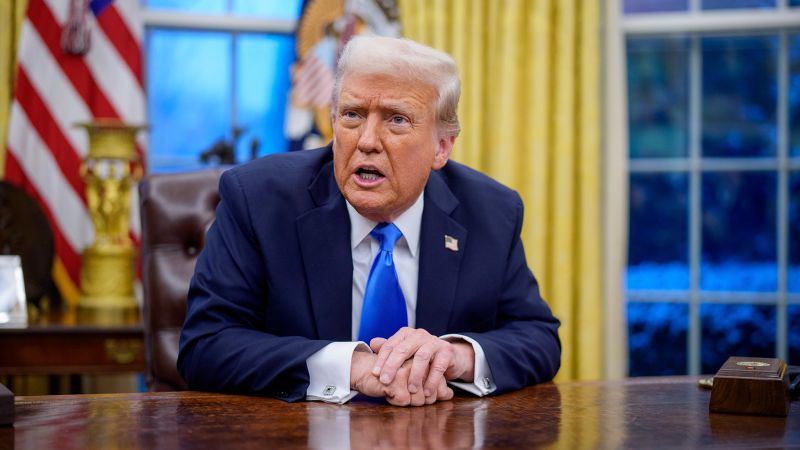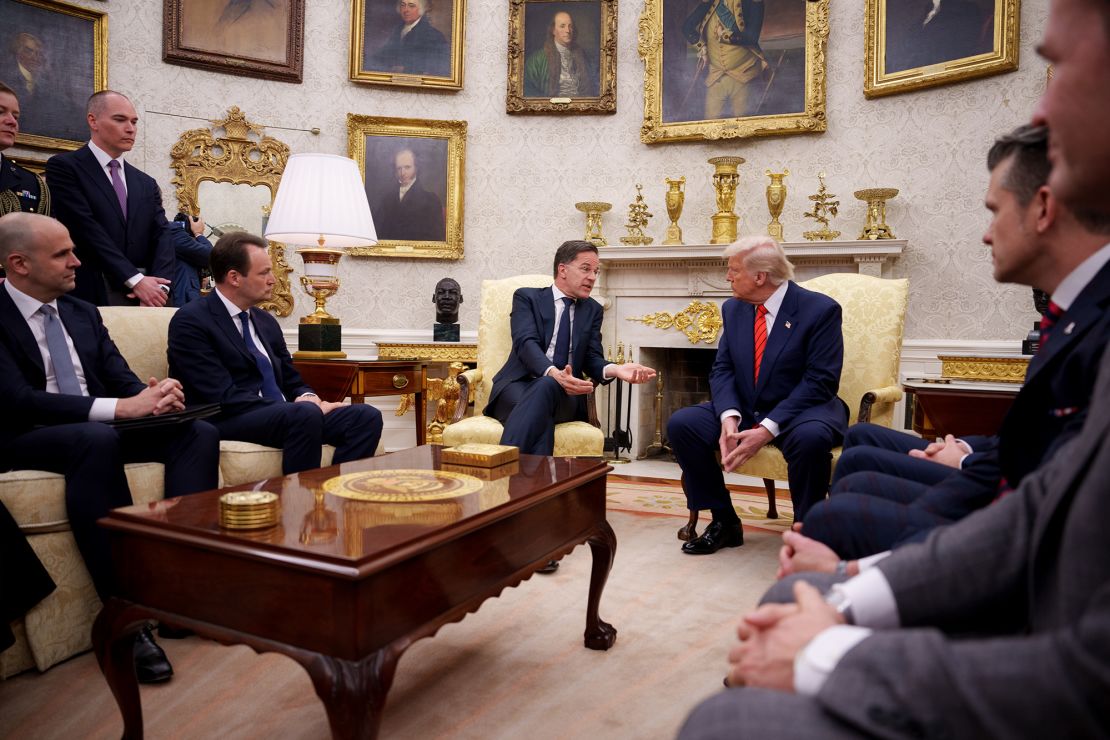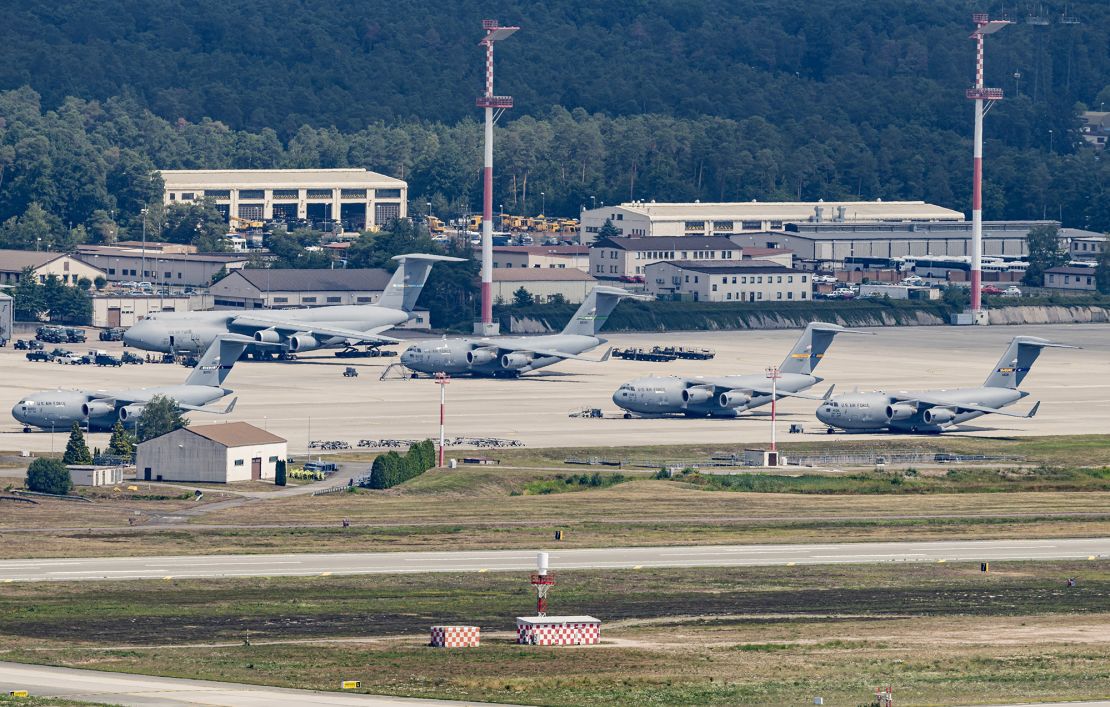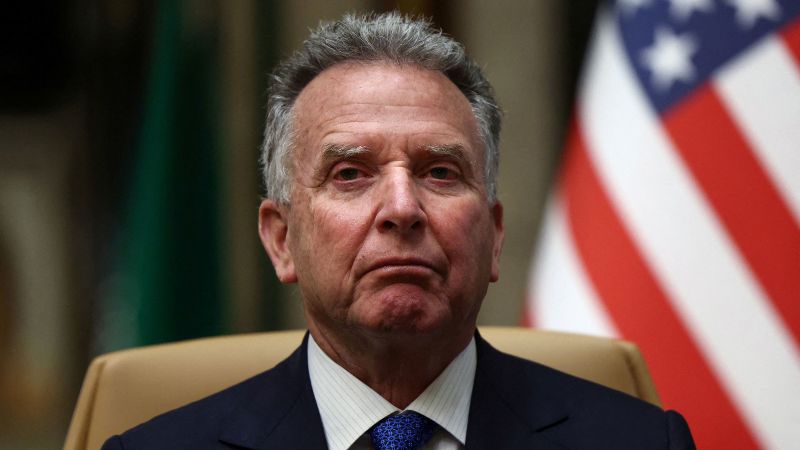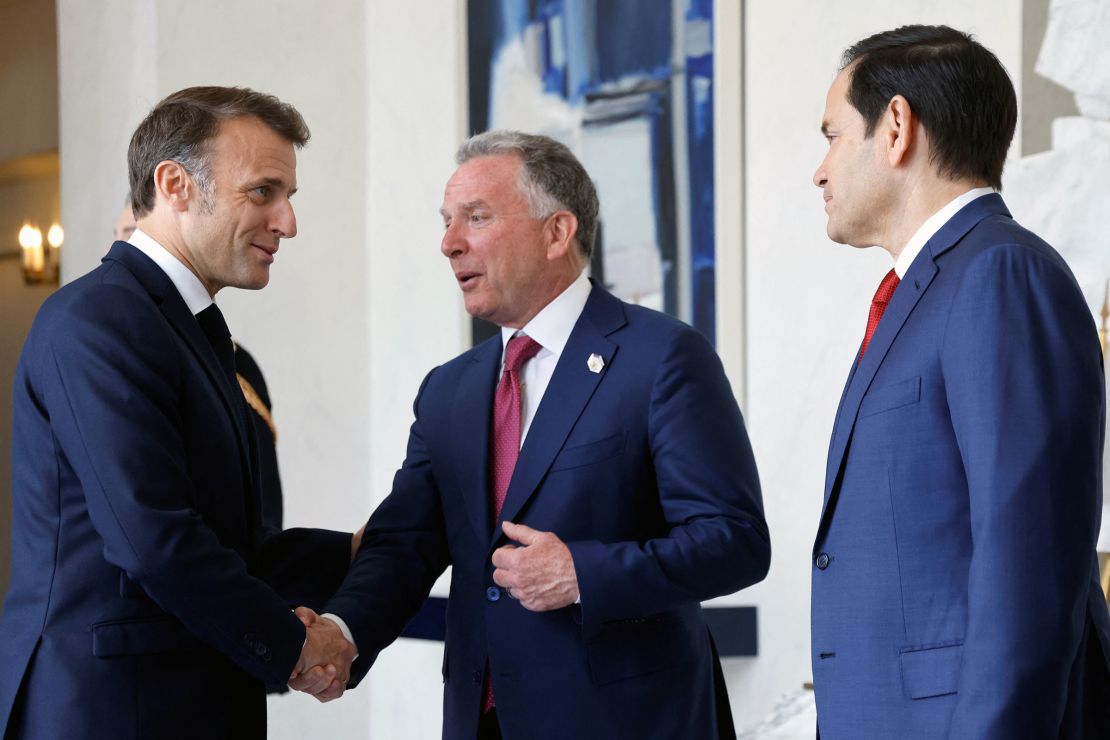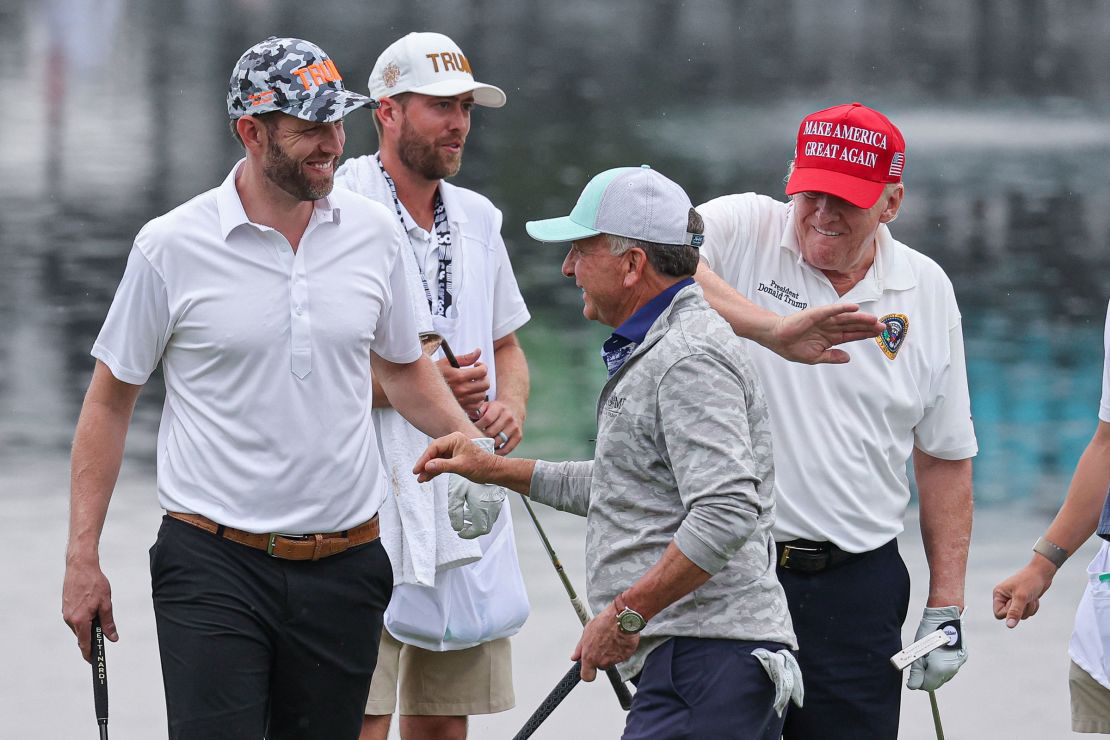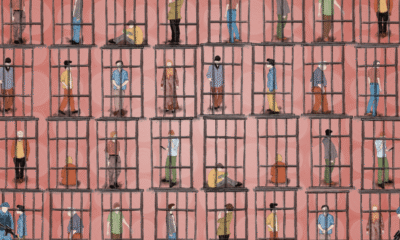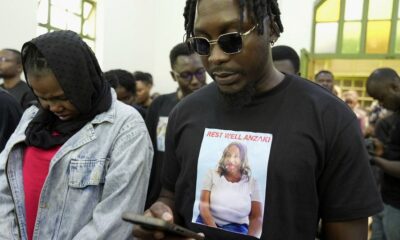CNN
—
When Jason O’Sullivan walked through the door of Jenny McGowan’s accommodation in Nangi, a tiny village deep in the mountains of Nepal, she couldn’t believe it.
“I wasn’t obviously looking for anyone, because who are we gonna meet on the top of a mountain in the middle of the Himalayas?” Jenny tells CNN Travel today.
It was the spring of 2012. Jenny was a 21-year-old student studying education and making the most of a college-organized opportunity to spend a few weeks teaching English in South Asia.
Jenny was volunteering at the school, along with her friend and fellow Brit, Bonnie. When Jenny and Bonnie arrived in Nangi, there was a brief mention of an Australian family coming along to volunteer with their young kids.
But Jenny wasn’t really focused on the other volunteers and when they might be arriving, or what they might be like. Instead, she was enjoying the stunning, mountainous setting of Nangi, which is located about 2,260 meters (7,415 feet) above sea level, amid the Annapurna Mountains. Jenny was relishing soaking up a different culture and way of life, immersing herself in the local community in Nangi.
“It was very cool,” reflects Jenny. “Waking up in the morning and seeing Annapurna. That was very impressive. And I was really focused on learning about how to teach English.”

The night Jason arrived in Nangi, “we lost power, because there was a storm,” recalls Jenny.
Jenny and her friend Bonnie were sitting by candlelight in their volunteer hut, when Jason suddenly walked through the door. He was a tall Australian guy, in his mid-20s. His presence was totally unexpected.
Jenny and her friend were baffled.
“We were told it was going to be an Australian family with a mom, a dad and two young boys. It ended up being a mom, a dad, two young girls and their adult nephew,” explains Jenny.
Jason was the adult nephew — an electrician from Brisbane who’d just finished his apprenticeship and, by his own admission, “wasn’t really doing anything super substantial with my life” back in 2012.
When Jason got wind of his uncle’s plans to take his family to Nepal for a couple of months of volunteer work, he was intrigued. Then, when he chatted with his uncle about the trip, Jason was persuaded to go along “to do electrical work and repair things,” as he recalls it.
Jason’s decision to join the family in Nepal was pretty spontaneous. As Jason puts it to CNN Travel today: “I just thought, ‘Yeah, screw it, I’ll go along for a bit too.’”
Jason only realized the extent of the undertaking once the family embarked on the journey from Australia to Nepal.
“They flew from Melbourne, I flew from Brisbane. We met up in Hong Kong, and then flew to Kathmandu, and then we got a jeep to Pokhara. We stayed there for a night or two. Then we got another jeep to Beni, another village, and then from there we got a jeep up the mountain to Nangi, which was terrifying, especially in the rain.”
The family actually “got out and walked for the last portion” of the journey up the mountain, recalls Jason, convinced driving was “an absolute death trap.”
When Jason walked into the darkened volunteer hut, soaked through with rain, Jenny only saw part of his face illuminated by the candle light. They made eye contact, and as he got closer to the candle flame, she registered on his face a look of surprise she imagined was reflected on her own.
“I definitely didn’t expect to see people,” says Jason today.
“You didn’t expect to see me,” says Jenny.
“No, definitely not,” says Jason.
In truth, Jason had no idea what to expect from Nepal — not from the volunteer work, from the country or from the other volunteers.
“I didn’t really know what I’d signed up for,” he says. “It was all very haphazard, and then we got there late at night. It’s all very kind of surreal, because we just traveled for days to get to this tiny village in the middle of nowhere…”
As for Jenny, as she took in Jason that first evening, she was “very surprised and confused.”
But she also felt something else: excitement.
“So excited,” Jenny admits today. “He was definitely my type, you know, tall, dark and broad. I was like: ‘Who is this person?’”
The next day, Jenny was getting to know Jason’s little cousins. They were sweet, and she enjoyed playing with them. But she also took the opportunity to do a bit of digging.
“I was asking them, ‘So, Jason, how old is he?’ And they were like, ‘Oh, he’s 26 but he doesn’t even have a girlfriend. He should be married by now,’” recalls Jenny.
She remembers thinking this was “good information” to have.
As for Jason, he found Jenny intriguing from the outset.
“I thought she was interesting,” he says. “The romance bit is hard to pinpoint.”

Over the next few days, Jenny and Jason naturally found themselves thrown together.
“Playing cards and basketball, dodgeball, football with the village kids…” recalls Jenny.
In the daytime, Jason fixed the school electrics and Jenny taught English. In the evenings, they watched movies together on Jenny’s friend Bonnie’s laptop.
“It was fun,” Jenny says. “But we didn’t… there was nothing that romantic, at the time.”
This was partly because Jenny’s friend Bonnie was usually in the mix too — and usually playing Justin Bieber, whose hit song “Boyfriend” had just come out.
“She kept playing one song over and over again because the girls really loved it,” recalls Jenny. “Though I think partly we were playing it over and over again because Jason hated it so much.”
There seemed to be something between Jenny and Jason, but Jenny wasn’t entirely sure what Jason was thinking. One time she suggested the two of them stay up late, watching a horror movie, after Bonnie had gone to bed. But Jason just shrugged that scary movies “weren’t really his thing” and went to bed too.
Jason and Jenny only overlapped in Nangi for a couple of weeks before she headed back to the UK.
There was a wall in the volunteer hut where departing volunteers could write a parting message and leave their email address. Jenny wrote her message and included her email. She figured if Jason wanted to stay in touch, he would.
Returning to her home in Bristol, in the southwest of England, was a bit of a culture shock after her weeks in the mountains of Nepal. Jenny found herself thinking about the school, about her pupils. And mostly, about Jason.
“I didn’t hear from him for a week or two,” she recalls. “Then, suddenly, I got an email from a Jason O’Sullivan.”
For a moment, Jenny thought, “Who’s Jason O’Sullivan?” They’d never exchanged full names in Nepal.
But she quickly put two and two together and replied. Soon, Jenny and Jason were emailing regularly, back and forth. They chatted about their day-to-days and filled in the blanks in their life stories that they hadn’t touched on in Nepal.
“Then, after a couple months, I was like, ‘Do you have a smartphone? If you do, you can download WhatsApp, and then we can text,’” recalls Jenny.
“And I didn’t hear from him for a couple days. And I was like, ‘Oh, maybe he’s been put off by that.’ But then a couple days later, he sends me just a one line email that says, ‘Okay, I have a smartphone. Now. What do I do?’ So he went out and bought a phone so that we could message.”
In 2012, smartphones weren’t as prevalent as they are today. Still, looking back, Jenny jokes to Jason that she “dragged you into the 21st century,” while Jason credits Jenny for forcing him to “download my first app.”
The two continued to embrace modern technology when they video called for the first time, a couple of months later.
By then, it was September — several months since their time together in Nepal.
Jenny was anxious in the lead-up to the call, part of her illogically worried “that it wasn’t him, that I’d been texting some random.”
“But then we’re on Skype, and soon we were Skyping every single day.”
I wasn’t obviously looking for anyone, because who are we gonna meet on the top of a mountain in the middle of the Himalayas?
Jenny, on the moment she met Jason
Somewhere along the line, it became obvious to both Jenny and Jason that their connection wasn’t just a friendship. Jenny had liked Jason from the offset, and her feelings had only grown in the subsequent months. She’d expected her feelings were reciprocated once Jason started emailing her so often.
This was finally confirmed when Jenny, at one point, mentioned to Jason she was going on a date in the UK.
Only half-joking, Jason messaged that he hoped it went badly.
“Why?” Jenny asked him.
“Because I like you,” Jason said. “As more than a friend.”
Jenny confided in her mother and sister about her feelings for Jason, and about what he’d said. Her loved ones encouraged her to follow her heart, but Jenny was acutely aware of how far away Jason was.
“At that time, I didn’t really see a chance for us to be together, because we lived on other sides of the world, and I hadn’t ever considered moving to Australia. It wasn’t even a place I wanted to visit … I wanted to teach English as a foreign language. And I was like, ‘Well, they already do speak English.’ And I wanted to travel the world doing that. So it wasn’t on my list,” Jenny says.
Meanwhile, when Jenny told her friends about her conversation with Jason and about their subsequent decision to be exclusive, her friends told her this was “ridiculous.”
“They were like, ‘How can you not see other people when you don’t even see each other?’” Jenny recalls.
I didn’t really see a chance for us to be together, because we lived on other sides of the world
Jenny, on the long distance relationship
But then that fall, Jason and Jenny joined the online ticket line for Glastonbury Festival tickets. It’s notoriously difficult to get tickets for the popular UK-based music festival. But somehow, Jason reached the front of the line and grabbed two tickets.
And with that, a plan was formed. Jenny and Jason would reunite in the summer of 2013 to attend Glastonbury together, with Jason planning to come to the UK a month or so beforehand.
“Glastonbury was the catalyst,” says Jenny.
But things were building to a reunion either way, says Jason.
“Pretty much as soon as we were escalating to Skype, I went, ‘Okay, I’m going on a holiday,’” he says.
Jason headed to the UK in May 2013, a couple of months ahead of Glastonbury, and planned to stay with Jenny for a few months.
“All of my friends thought it was a really stupid idea to commit to living with someone that I’d only known for a few days,” says Jenny.
She tried to convince them he really wasn’t a stranger.
“I was like, ‘It’s not really the same, because we’ve Skyped every single day for hours,’” she says.
A UK reunion and an Australian decision
Jason arrived at London Heathrow airport in May 2013, with Jenny’s Bristol address saved in his cell phone.
“I distinctly remember I got the bus from London to Bristol, and then a taxi from the bus terminal to this address. And I get out of the taxi, and I look up and Jenny is looking out the window. And it became very, very real,” he recalls.
“I knocked on the door, and she came down and answered the door. And I think my first words were, ‘You’re littler than I remember.’”
It was bizarre, Jason says, to see someone in person he’d only met once, over a year previously, for a couple of weeks.
Jenny felt this too. The reunion was “surreal,” she says.
“For so long, for a year, you’d just been someone on a screen and then all of a sudden, you weren’t, and you’re real, and it was crazy,” she says to Jason today.
But the two got over this strangeness very quickly, settling into a routine that felt natural.
In the end, Jason stayed in the UK with Jenny for nine months. The two rented their own apartment together. By then, Jenny was working as a nanny, and Jason got a job at a home improvement store.
On weekends, the two explored the UK together and vacationed in Europe, enjoying some amazing experiences: “Pamplona running with the bulls, Northern Lights in Iceland, Oktoberfest in Germany…”
“And we obviously did Glastonbury,” adds Jenny. “We had a great time… Arctic Monkeys was a favorite of mine but I also enjoyed introducing Jason to the giant Yorkshire pudding bowls they had there, filled with roast dinner.”
In between adventures, the couple also talked about their future. They decided after their stint in the UK, Jenny would go with Jason to Australia for a while.
They figured they would “sort of decide from there who was going to move.” By then, Jenny and Jason were certain their connection was going to be “long-term.” They knew one of them was going to move across the world.
Jason left the UK in February 2014. A month later, Jenny followed him to Brisbane.
It was an emotional decision. In her heart, Jenny knew this wasn’t a brief vacation. This was it.
“I was going to stay,” she says. “We were very committed at that point. We’d known each other for almost two years, and we had lived together for nine months. Unless I hated Australia, that’s where we were going to settle.”
The day before her flight, Jenny sat on her living room floor with her mother, an empty suitcase in front of them.
“I was only taking one suitcase over,” explains Jenny.
She had to be selective with what she brought to her new life. So Jenny held up items of clothing to her mother, and together they decided whether Jenny would pack them, or Jenny’s mother would take them to the thrift store.
They were being consciously practical, and then Jenny “just burst into tears.” She was suddenly struck by the reality of her decision.
“It was just really real, to think that I was leaving. It was a bit confronting, leaving everything I’d ever known, moving to the other side of the world,” she says. “I didn’t have any friends there. I didn’t have work set up. Literally the only person I knew was this guy. And I didn’t know what it was going to be like, I’d never visited before.”
The only thing Jenny knew about Australia, she’d learned from binge-watching the soap opera “Neighbours” in the weeks leading up to her departure.
But Jenny’s mother encouraged her to follow her heart, to give Brisbane a try. And as soon as she arrived and was reunited with Jason, Jenny knew going to Australia was the right choice. In time, she settled into her new life.
Within a couple of years, the couple were putting down roots, building their dream home from scratch.
“We actually met on April 6, 2012, we bought land on April 6, 2015 and then we got married on April 6, 2018,” says Jenny.

“We met on a mountain, and got married on a mountain,” says Jason.
The wedding took place in the surrounds of the Australian Glass House Mountains, in the Sunshine Coast Hinterland, in eastern Australia.
The mountainous setting was a nod to the couple’s Nepal origin story. Meanwhile, Jenny decorated the venue with UK and Aussie-themed paraphernalia.
The wedding was a “party on a hill in a tent,” recalls Jason. This festival vibe felt appropriate given the role Glastonbury played in their love story.
It was casual and great fun:
“A taco truck and a pizza truck…” recalls Jenny, who took Jason’s name following the wedding, becoming Jenny O’Sullivan.
“A band in a tent — muddy, real muddy,” adds Jason.
It was the perfect celebration of the next chapter of their life together.

Today, Jenny and Jason still live in Brisbane, Australia. Jason works in infrastructure, while Jenny has an online business selling personalized jewelry and handmade gifts, called Roo and Wren.
The couple have two young children and enjoy taking them “back to sunny England occasionally,” as Jason puts it. They recently returned to attend Jenny’s sister’s wedding.
Becoming parents has been “great, but a lot of hard work,” says Jason.
“It was difficult at first as we have no family support with my family in the UK and Jason’s up near Cairns,” agrees Jenny.
“We’re so happy with our family, though, and we’ve gotten the hang of it now!”
The family enjoy embracing British and Australian traditions — and mixing them up to make something new, such as over the holidays when Jenny says they “have the full British Christmas lunch on Christmas day but we also have prawns and set up our water park in the afternoon in our back garden.”

Today, when the couple meet new people, they tend to assume Jenny and Jason met in Australia. It’s not uncommon for Brits to move Down Under or for Australians to head in the other direction. People think they know the outline of their love story. And then Jenny starts talking about the Himalayas, a three-day trip up a mountain and a candlelit first glance.
“Every time I tell the real story, I’m like ‘This sounds like I’m making this up,’” says Jenny.
It’s now 13 years since Jason walked into the candlelit room and saw Jenny for the first time.
“It was extremely unlikely, but life changing,” says Jason of that moment.
“I just feel really lucky that our paths crossed,” says Jenny.
The couple returned to Nepal together in April 2017, to mark five years since they met. They didn’t return to the village of Nangi, because, as Jason says, “it’s quite the logistical hurdle to get up there.”
But it was special to return to the country where they first crossed paths, a place that they both love and hold dear.
“And one day we’ll go back up to Nangi, take the kids up,” says Jason. “That would be very cool.”


